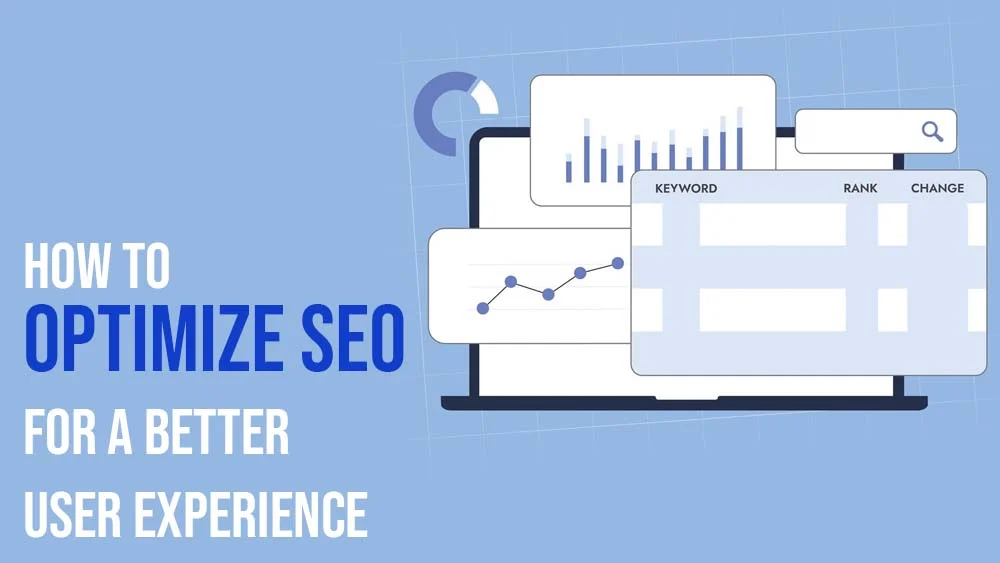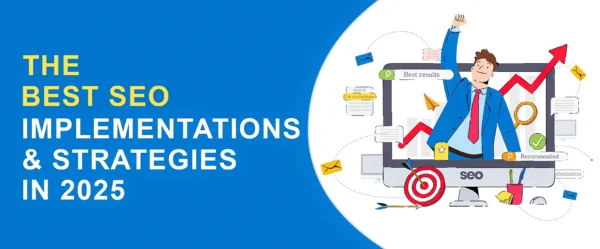Ever noticed how user experience and SEO are two sides of the same coin? These two tend to depend on each other greatly. But why? Let me tell you. SEO ensures that your site ranks well when you optimize it correctly. Additionally, it ensures that its optimization attracts visitors. User experience, aka UX, is what makes sure that those visitors stay, engage, and convert. But what makes this relationship one that is of the essence? When you’re visiting a website that ranks at the top of a search page, you expect it to function greatly and without any challenges in the way. However, some websites tend to get cluttered, become slow, and even give you challenging navigation time. That is why this guide aims to teach you how to optimize SEO for a better user experience.
We will explore how SEO and UX will help your website stay on the top of the SERPs. The combination of UX and SEO is one that prevents the phenomenon known as “pogo-sticking.” What is that? It is when various different users visit various URLs to find the result that satisfies them the most. It is important that you know how to create an SEO optimization strategy that will prevent you from crossing paths with this phenomenon. SEO without a solid UX strategy is like inviting guests to a party and forgetting to provide refreshments. A site may rank well initially, but poor UX will push visitors away. And this is what we will discuss in detail in this guide. Knowing how to learn and optimize SEO for a better user experience is the main topic for today. Delve deeper to understand all about it.
Focus on Mobile Optimization for a Seamless User Journey
More than 60% of all web traffic originates from mobile devices, in case you were unaware. This statistic alone underscores the importance of mobile optimization. A mobile-friendly website isn’t just important for SEO; it’s a step that is mandatory to take in order to deliver an excellent user experience. Imagine accessing a website on your phone only to discover it lagging or not loading properly. Wouldn’t that drive you away? It is necessary that you optimize your website to have a mobile-friendly interface.
Mobile optimization starts with a responsive design. Responsive websites adapt to any screen size. That is to ensure a consistent experience whether users are on a smartphone, tablet, or desktop. The device doesn’t matter; what matters is how responsive and optimized your website is. Beyond responsiveness, consider load times. Mobile users are often on the go and unwilling to wait more than three seconds for a page to load. Tools like Google’s Mobile-Friendly Test and PageSpeed Insights can help identify issues and suggest improvements.
Navigation on mobile devices also requires special attention. Use large, tappable buttons and ensure key information is accessible. That is, without excessive scrolling or zooming. Think about how frustrating it is to struggle with tiny text or misclicks due to poorly designed menus. That is, because putting yourself in your users’ shoes is what will make you succeed greatly.
Improving Website Speed for Higher Engagement
Have you ever clicked on a website, waited too long for it to load, and closed it in frustration? You’re not alone. A slow website can repel visitors and eventually drive them away. This can potentially negatively impact your SEO ranking. In fact, studies show that 53% of users abandon a site if it takes longer than three seconds to load. Honestly, you don’t need a specific study to draw this conclusion. We’ve all been there, and that was our reaction as well.
Website speed is of the essence. This is due to its impact on user satisfaction, engagement, and even conversion rates. Take Amazon, for example. Amazon found that just a one-second delay in page load could cost them $1.6 billion annually. If that doesn’t scream that speed matters, I don’t know what will. Here are a few ways to improve website speed:
- Compress photos to reduce file size all while maintaining your high quality.
- Use a content delivery network (CDN) to distribute content faster.
- Minimize the use of heavy scripts or plugins that can bog down performance.
Crafting High-Quality Content That Resonates with Users
What makes users stay on your site and explore it? The answer is simple, and I will summarize it in one word: content. High-quality content is the backbone of both SEO and the user experience. But what defines “high quality”? First and foremost, your content has to be relevant. If a user searches how to cook paella, your guide has to have the exact steps of how to cook paella and not how to bake a cake instead.
Content relevance is something that is of great importance, as it makes all the difference in the world for your website visitors. Secondly, your content has to be engaging. But how can you create engaging content? It’s simple and fun, actually. Make sure to use examples, provide a compelling story through storytelling, and write in a conversational tone that grabs your readers’ attention. Let me walk you through a hypothetical example for better understanding of what I mean.
Instead of using “cooking paella requires a mixture of ingredients,” you can say, “Ever tried cooking paella without having each and every ingredient it requires? It can lack the taste you wish for and that is why you need to have all the ingredients to cook it to perfection.”
Visual aids like images, infographics, and videos can elevate your content. Break long paragraphs into scannable sections with subheadings and bullet points. This not only helps readers but also improves SEO by making content easier for search engines to understand. Your content is the main key to your website’s success. Because if you take a closer look, you’ll find that it is the main reason why people are visiting your website in the first place. And if the main reason for their visit is weak or boring, they’re likely to leave and not look back. Something that neither of us want, right?
Simplifying Navigation to Reduce Frustration
Ever walked in a hypermarket and couldn’t find those aisle labels that guide you clearly into the store? You’ll find yourself lost between scattered products and endless food and beverage aisles that can waste your time trying to find the tomato paste and olive oil section. This could lead to a great deal of frustration from your end. Know that a poorly structured website would feel just like that. One of the key elements that will help your website succeed is it’s navigation and ease of use.
Simplified navigation is one key that will help you unlock a door that will allow your users to be happy and engage with your website and content. But how can you reach such a navigation? Let me tell you. All you have to do is start to organize your website and categorize it. Separate the categories with subcategories to eliminate any user confusion. For example, you can use descriptive labels for menus such as “Shop, Blog, and Contact Us.” These are way better than vague and general terms like “Explore” or “Resources.”
How to Optimize SEO for a Better User Experience? More Navigational Tips
Another element that can help users navigate your website easily is a search bar. This element will be of enormous help for users who know exactly what they’re searching for. I for one love search bars and the ease that they provide when I am looking for something specific. Take Z-Library as an example. It has a search bar displayed, and there, you can search and look for whatever document or book you’re searching for. Another simple navigation element that you can implement is breadcrumbs.
Breadcrumbs in SEO are navigational links that show users their location within a website’s hierarchy. This enhances the user experience and search engine understanding. For example, in an e-commerce site, a breadcrumb trail might look like this: The breadcrumb trail for an e-commerce site might look like this: Home > Electronics > Smartphones > iPhone 15. It is crucial that you implement these tips to create a site that facilitates easy navigation for your users and enhances their experience through ease and smoothness.
To Wrap This Up!
Optimizing SEO for a better user experience is no longer optional. As a matter of fact it’s essential. When you focus on mobile optimization, improving your speed, crafting quality content, and leveraging structured data, you create a website that attracts visitors and keeps them engaged. Want to delve deeper into how to make your website succeed in the context of SEO? You can visit linkexchange.ai.
This platform will help you dive deep into the SEO details that you need to help your website soar. With excellent services like guest posting, author posting, link exchanging, and link insertion, our platform has it all. Linkexchange.ai guarantees your SEO success. If you wish to read more about SEO, our blog contains comprehensive guides that will help guide you for a better SEO strategy path.











